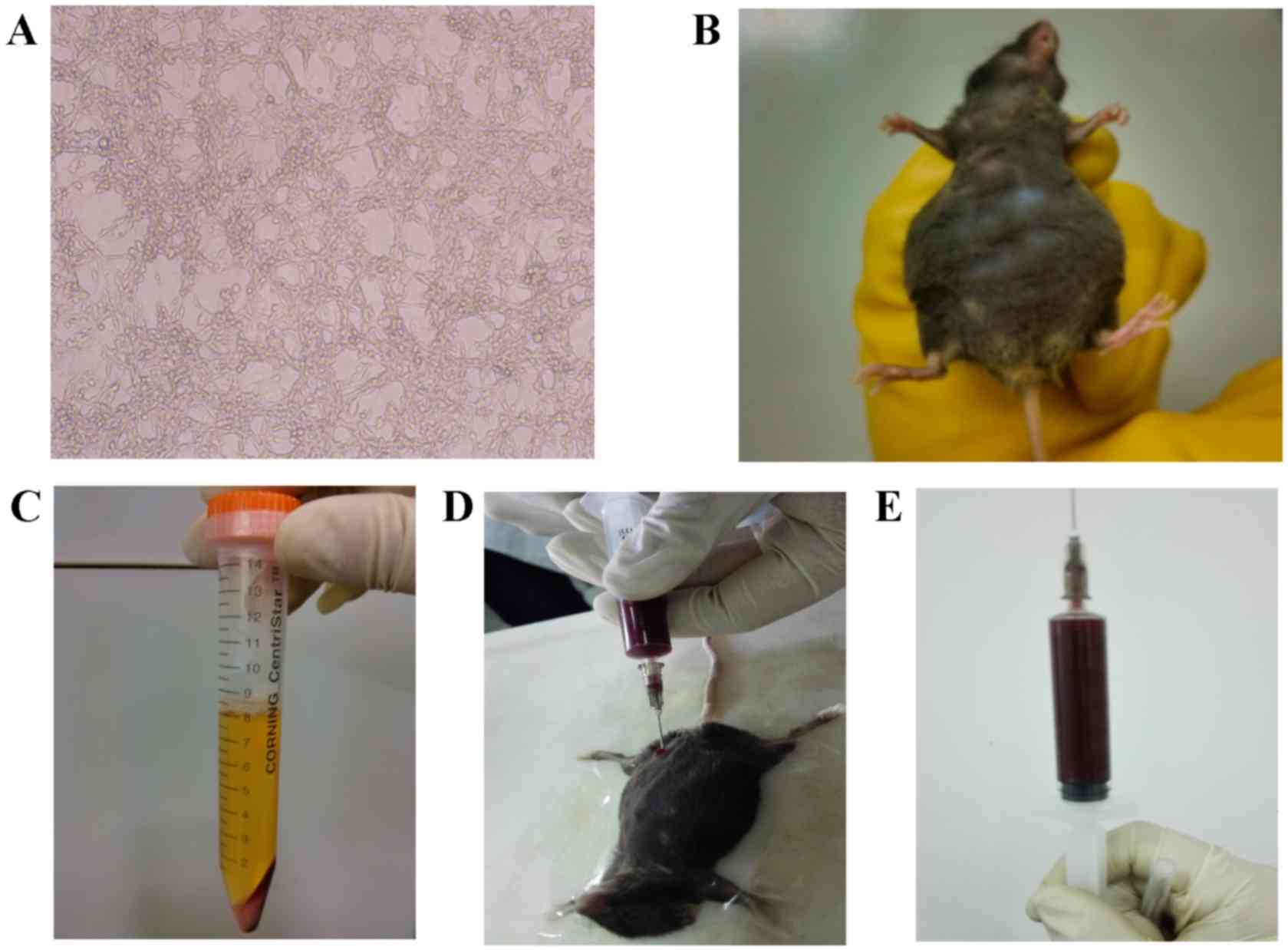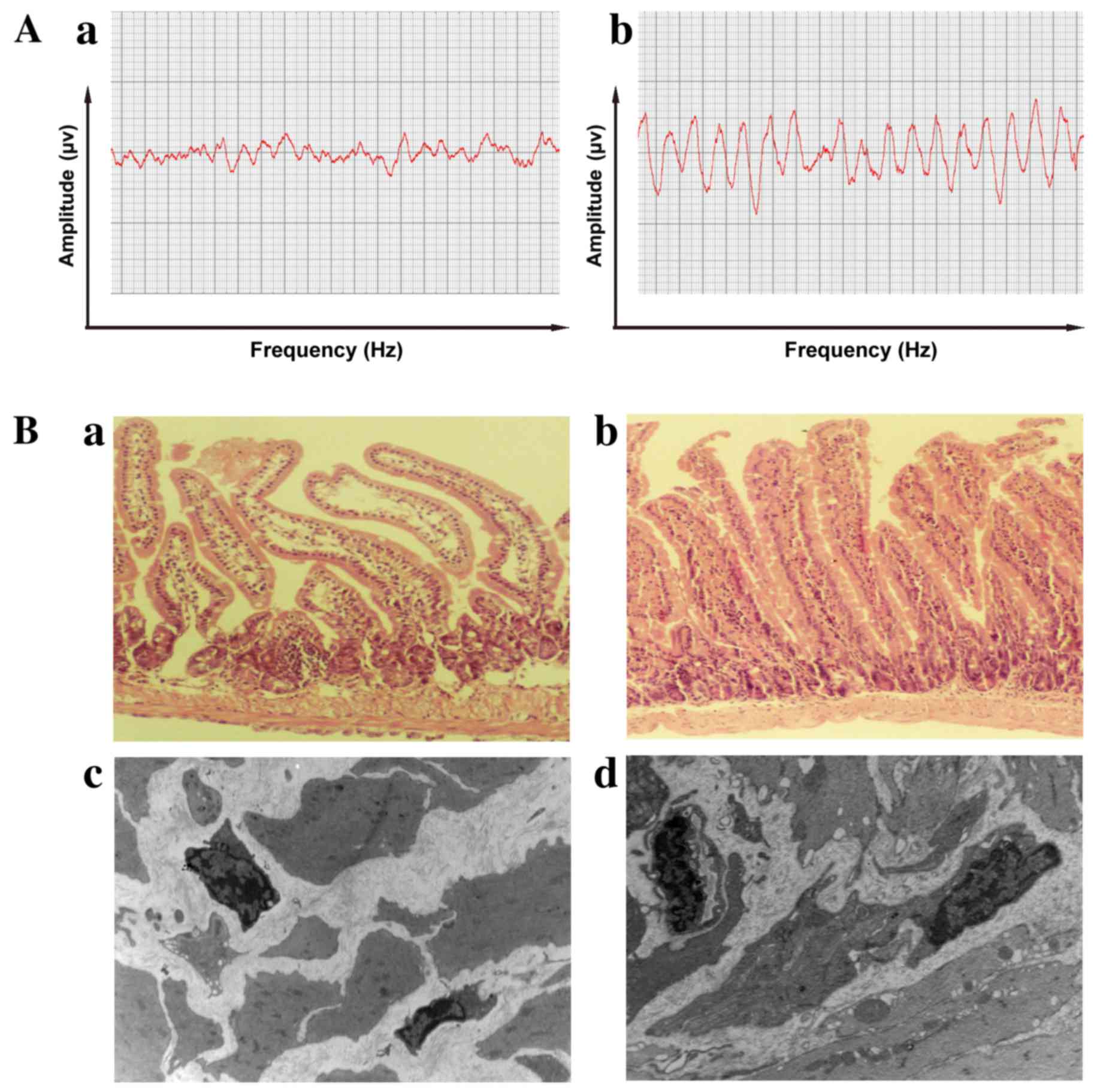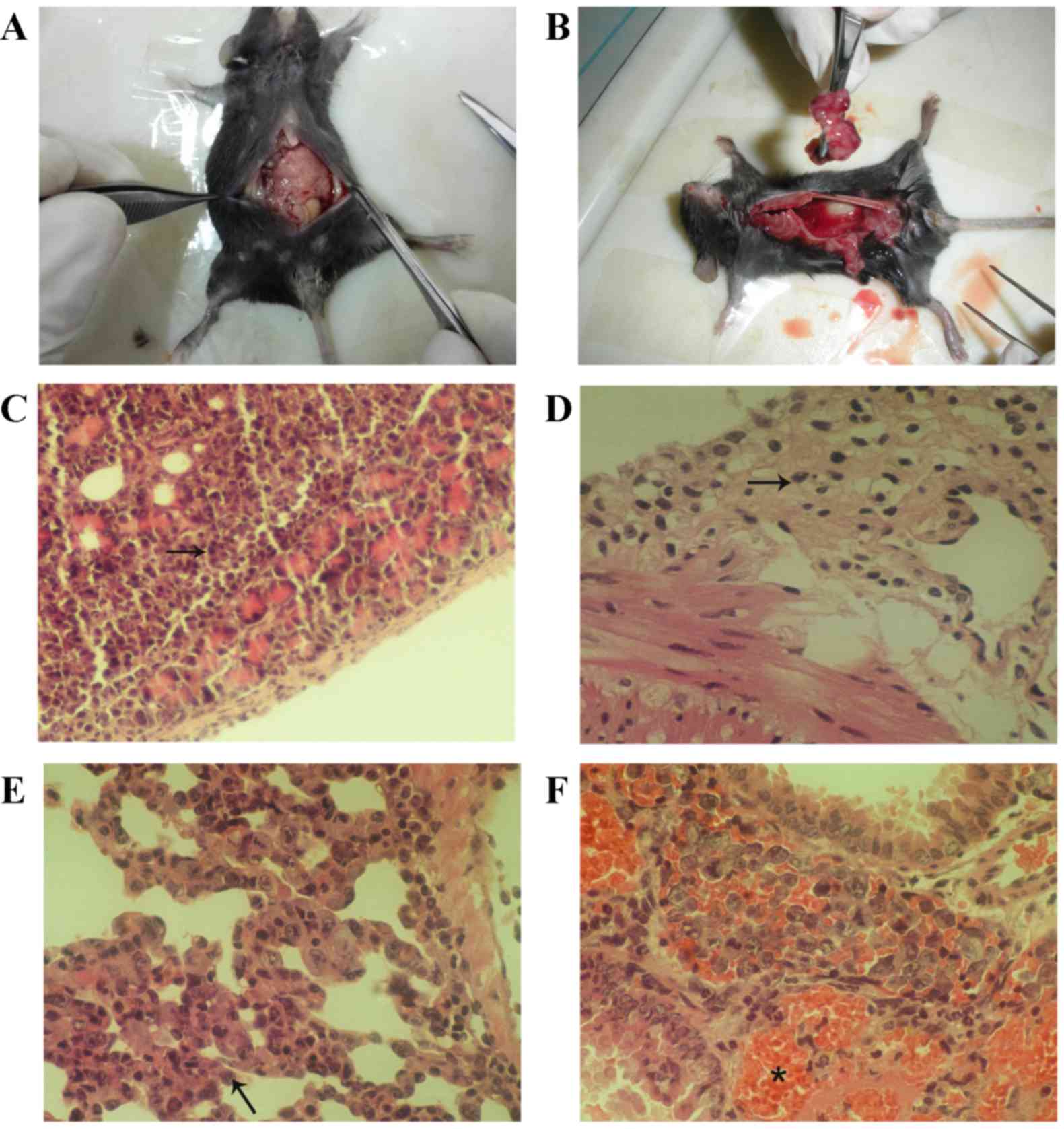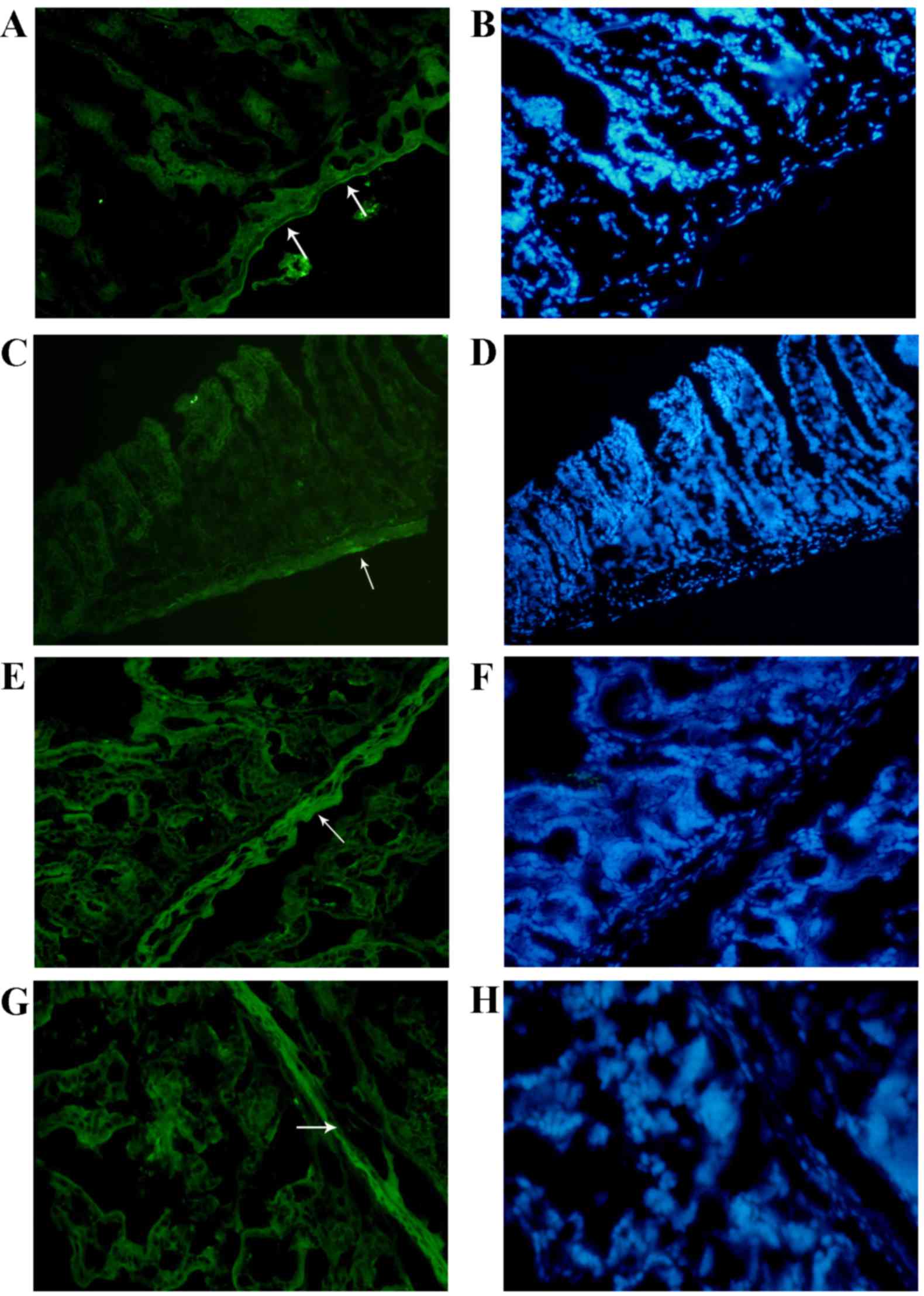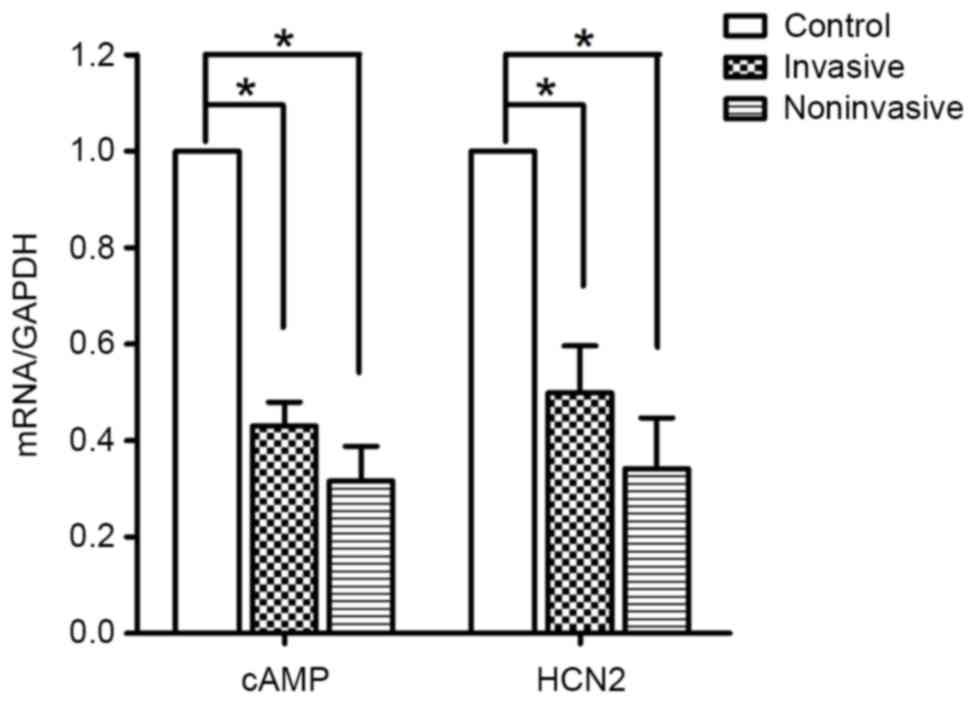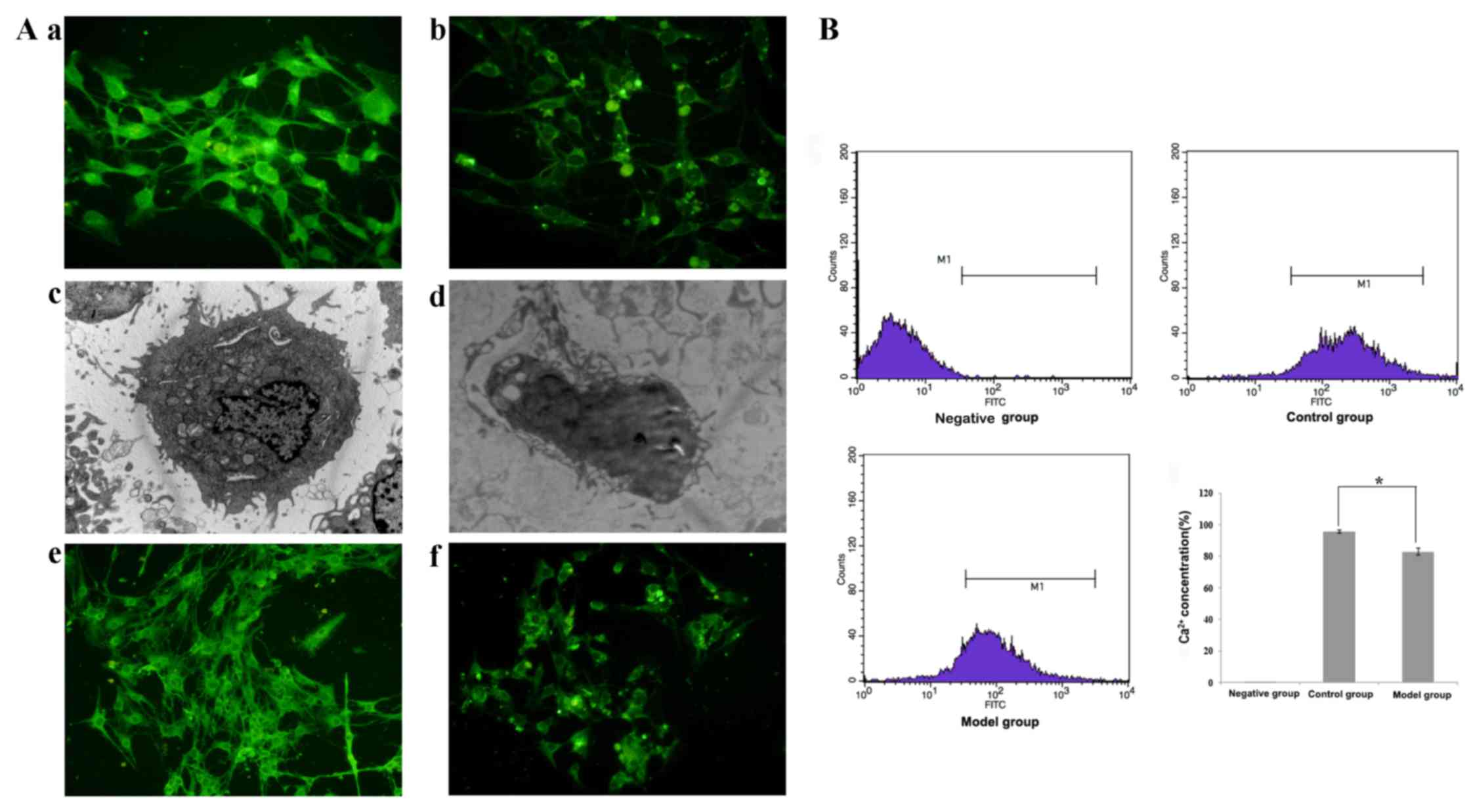|
1
|
Becker G, Galandi D and Blum HE: Malignant
ascites: Systematic review and guideline for treatment. Eur J
Cancer. 42:589–597. 2006. View Article : Google Scholar : PubMed/NCBI
|
|
2
|
Sangisetty SL and Miner TJ: Malignant
ascites: A review of prognostic factors, pathophysiology and
therapeutic measures. World J Gastrointest Surg. 4:87–95. 2012.
View Article : Google Scholar : PubMed/NCBI
|
|
3
|
Zheng H, He Y, Tong J, Sun L, Yang D, Li
H, Ao N, Jin X and Zhang Q: Is gastrointestinal dysfunction induced
by gastric cancer peritoneal metastasis relevant to impairment of
interstitial cells of Cajal? Clin Exp Metastasis. 28:291–299. 2011.
View Article : Google Scholar : PubMed/NCBI
|
|
4
|
Li J, Kong D, He Y, Wang X, Gao L, Li J,
Yan M, Liu D, Wang Y, Zhang L and Jin X: The impact of inflammatory
cells in malignant ascites on small intestinal ICCs' morphology and
function. J Cell Mol Med. 19:2118–2127. 2015.PubMed/NCBI
|
|
5
|
Sanders KM, Ward SM and Koh SD:
Interstitial cells: Regulators of smooth muscle function. Physiol
Rev. 94:859–907. 2014. View Article : Google Scholar : PubMed/NCBI
|
|
6
|
Gomez-Pinilla PJ, Gibbons SJ, Bardsley MR,
Lorincz A, Pozo MJ, Pasricha PJ, Van de Rijn M, West RB, Sarr MG,
Kendrick ML, et al: Ano1 is a selective marker of interstitial
cells of Cajal in the human and mouse gastrointestinal tract. Am J
Physiol Gastrointest Liver Physiol. 296:G1370–G1381. 2009.
View Article : Google Scholar : PubMed/NCBI
|
|
7
|
Koh SD, Sanders KM and Ward SM:
Spontaneous electrical rhythmicity in cultured interstitial cells
of cajal from the murine small intestine. J Physiol. 513:203–213.
1998. View Article : Google Scholar : PubMed/NCBI
|
|
8
|
d'antonio C, Wang B, McKay C and Huizinga
JD: Substance P activates a non-selective cation channel in murine
pacemaker ICC. Neurogastroenterol Motil. 21:985-e79. 2009.
|
|
9
|
Huizinga JD, Zarate N and Farrugia G:
Physiology, injury, and recovery of interstitial cells of Cajal:
Basic and clinical science. Gastroenterology. 137:1548–1556. 2009.
View Article : Google Scholar : PubMed/NCBI
|
|
10
|
Strege PR, Ou Y, Sha L, Rich A, Gibbons
SJ, Szurszewski JH, Sarr MG and Farrugia G: Sodium current in human
intestinal interstitial cells of Cajal. Am J Physiol Gastrointest
Liver Physiol. 285:G1111–G1121. 2003. View Article : Google Scholar : PubMed/NCBI
|
|
11
|
Ward SM and Sanders KM: Involvement of
intramuscular interstitial cells of Cajal in neuroeffector
transmission in the gastrointestinal tract. J Physiol. 576:675–682.
2006. View Article : Google Scholar : PubMed/NCBI
|
|
12
|
Sanders KM and Ward SM: Interstitial cells
of Cajal: A new perspective on smooth muscle function. J Physiol.
576:721–726. 2006. View Article : Google Scholar : PubMed/NCBI
|
|
13
|
O'Donnell AM, Coyle D and Puri P:
Decreased expression of hyperpolarisation-activated cyclic
nucletide-gated channel 3 in Hirschsprung's disease. World J
Gastroenterol. 21:5635–5640. 2015. View Article : Google Scholar : PubMed/NCBI
|
|
14
|
Shahi PK, Choi S, Zuo DC, Kim MY, Park CG,
Kim YD, Lee J, Park KJ, So I and Jun JY: The possible roles of
hyperpolatization-activated cyclic nucleotide channels in
regulating pacemaker activity in colonic interstitial cells of
Cajal. J Gastroenterol. 49:1001–1010. 2014. View Article : Google Scholar : PubMed/NCBI
|
|
15
|
Harzheim D, Pfeiffer KH, Fabritz L,
Kremmer E, Buch T, Waisman A, Kirchhof P, Kaupp UB and Seifert R:
Cardiac pacemaker function of HCN4 channels in mice is confined to
embryonic development and requires cyclic AMP. EMBO J. 27:692–703.
2008. View Article : Google Scholar : PubMed/NCBI
|
|
16
|
Zong X, Krause S, Chen CC, Krüger J,
Gruner C, Cao-Ehlker X, Fenske S, Wahl-Schott C and Biel M:
Regulation of hyperpolarization-activated cyclic nucleotide-gated
(HCN) channel activity by cCMP. J Biol Chem. 287:26506–26512. 2012.
View Article : Google Scholar : PubMed/NCBI
|
|
17
|
DiFrancesco JC and DiFrancesco D:
Dysfunctional HCN ion channels in neurological diseases. Front Cell
Neurosci. 6:1742015. View Article : Google Scholar : PubMed/NCBI
|
|
18
|
Bernard M, Dejos C, Berges T, Regnacq M
and Voisin P: Activation of rhodopsin gene transcription in
cultured retinal precursors of chicken embryo: Role of Ca(2+)
signaling and hyperpolarization-activated cation channels. J
Neurochem. 129:85–98. 2014. View Article : Google Scholar : PubMed/NCBI
|
|
19
|
Livak KJ and Schmittgen TD: Analysis of
relative gene expression data using real-time quantitative PCR and
the 2(−Delta Delta C (T)) Method. Methods. 25:402–408. 2001.
View Article : Google Scholar : PubMed/NCBI
|
|
20
|
Pape HC: Queer current and pacemaker: The
hyperpolarization-actived cation current in neurons. Annu Rev
Physiol. 58:299–327. 1996. View Article : Google Scholar : PubMed/NCBI
|
|
21
|
DiFrancesco D and Tortora P: Direct
activation of cardiac pacemaker channels by intracellular cyclic
AMP. Nature. 351:145–147. 1991. View
Article : Google Scholar : PubMed/NCBI
|
|
22
|
Chasen M and Bhargava R: Gastrointestinal
symptoms, electrogastrography, inflammatory makers, and PG-SGA in
patients with advanced cancer. Support Care Cancer. 20:1283–1290.
2012. View Article : Google Scholar : PubMed/NCBI
|
|
23
|
Lee JC, Thuneberg L, Berezin I and
Huizinga JD: Generation of slow waves in membrane potential is an
intrinsic property of interstitial cells of Cajal. Am J Physiol.
277:G409–G423. 1999.PubMed/NCBI
|
|
24
|
Tan YY, Ji ZL, Zhao G, Jiang JR, Wang D
and Wang JM: Decreased SCF/c-kit signaling pathway contributes to
loss of interstitial cells of Cajal in gallstone disease. Int J
Clin Exp Med. 7:4099–4106. 2014.PubMed/NCBI
|
|
25
|
Kong D, Li J, Zhao B, Xia B, Zhang L, He
Y, Wang X, Gao L, Wang Y, Jin X and Lou G: The effect of SCF and
ouabain on small intestinal motility dysfunction induced by gastric
cancer peritoneal metastasis. Clin Exp Metastasis. 32:267–277.
2015. View Article : Google Scholar : PubMed/NCBI
|
|
26
|
Singh RD, Gibbons SJ, Saravanaperumal SA,
Du P, Hennig GW, Eisenman ST, Mazzone A, Hayashi Y, Cao C, Stoltz
GJ, et al: Ano1, a Ca2+-activated Cl- channel,
coordinates contractility in mouse intestine by Ca2+
transient coordination between interstitial cells of Cajal. J
Physiol. 592:4051–4068. 2014. View Article : Google Scholar : PubMed/NCBI
|
|
27
|
Ward SM, Ordog T, Koh SD, Baker SA, Jun
JY, Amberg G, Monaghan K and Sanders KM: Pacemaking in interstitial
cells of Cajal depends upon calcium handling by endoplasmic
reticulum and mitochondria. J Physiol. 525:355–361. 2000.
View Article : Google Scholar : PubMed/NCBI
|
|
28
|
Drumm BT, Sergeant GP, Hollywood MA,
Thornbury KT, Matsuda TT, Baba A, Harvey BJ and McHale NG: The
effect of high [K(+)]o on spontaneous Ca(2+) waves in freshly
isolated interstitial cells of Cajal from the rabbit urethra.
Physiol Rep. 2:e002032014. View
Article : Google Scholar : PubMed/NCBI
|
|
29
|
Zhu MH, Sung TS, O'Driscoll K, Koh SD and
Sanders KM: Intracellular Ca(2+) release from endoplasmic reticulum
regulates slow wave currents and pacemaker activity of interstitial
cells of Cajal. Am J Physiol Cell Physiol. 308:C608–C620. 2015.
View Article : Google Scholar : PubMed/NCBI
|
|
30
|
Zheng H, Park KS, Koh SD and Sanders KM:
Expression and function of a T-type Ca2+ conductance in
interstitial cells of Cajal of the murine small intestine. Am J
Physiol Cell Physiol. 306:C705–C713. 2014. View Article : Google Scholar : PubMed/NCBI
|
|
31
|
Biel M, Schneider A and Wahl C: Cardiac
HCN channels: Structure, function, and modulation. Trends
Cardiovasc Med. 12:206–212. 2002. View Article : Google Scholar : PubMed/NCBI
|
|
32
|
Notomi T and Shigemoto R:
Immunohistochemical localization of Ih channel subunits, HCN1-4, in
the rat brain. J Comp Neurol. 471:241–276. 2004. View Article : Google Scholar : PubMed/NCBI
|
|
33
|
Wang YP, Sun BY, Li Q, Dong L, Zhang GH,
Grundy D and Rong WF: Hperpolarization-activated cyclic
nucleotide-gated cation channel subtypes differentially modulate
the excitability of murine small intestinal afferents. World J
Gastroenterol. 18:522–531. 2012. View Article : Google Scholar : PubMed/NCBI
|
|
34
|
Yang S, Xiong CJ, Sun HM, Li XS, Zhang GQ,
Wu B and Zhou DS: The distribution of HCN2-positive cells in the
gastrointestinal tract of mice. J Anat. 221:303–310. 2012.
View Article : Google Scholar : PubMed/NCBI
|
|
35
|
Biel M, Wahl-Schott C, Michalakis S and
Zong X: Hyperpolarization-activated cation channels: From genes to
function. Physiol Rev. 89:847–885. 2009. View Article : Google Scholar : PubMed/NCBI
|
|
36
|
He P, Deng J, Zhong X, Zhou Z, Song B and
Li L: Identification of a hyperpolarization-activated cyclic
nucleotide-gated channel and its subtypes in the urinary bladder of
the rat. Urology. 79:1411.e7-e13. 2012. View Article : Google Scholar
|
|
37
|
Herrmann S, Schnorr S and Ludwig A: HCN
channels-modulators of cardiac and neuronal excitability. Int J Mol
Sci. 16:1429–1447. 2015. View Article : Google Scholar : PubMed/NCBI
|
|
38
|
Wainger BJ, DeGennaro M, Santoro B,
Siegelbaum SA and Tibbs GR: Molecular mechanism of cAMP modulation
of HCN pacemaker channels. Nature. 411:805–810. 2001. View Article : Google Scholar : PubMed/NCBI
|



